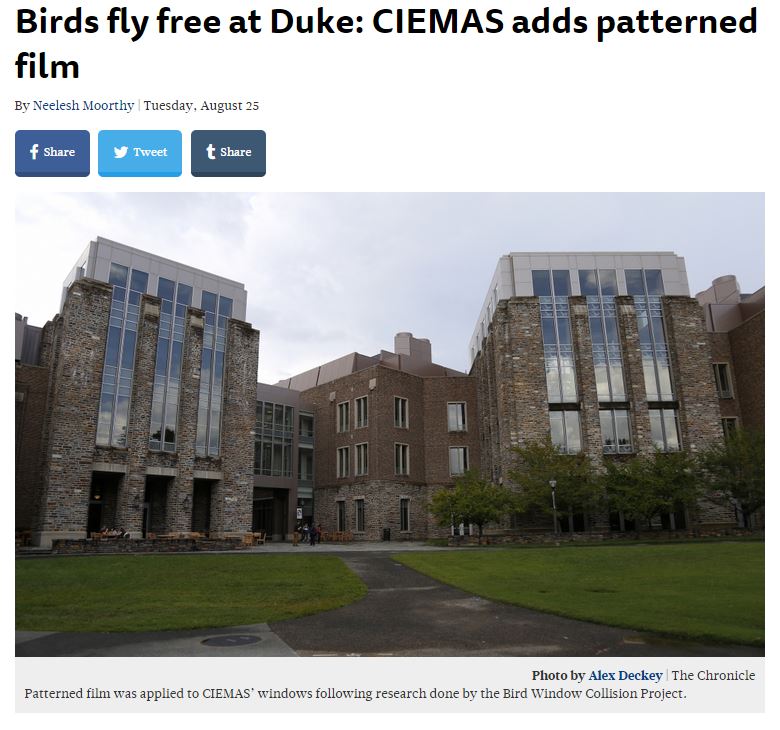Sometimes architects and project managers argue that renovations to make a building bird friendly are expensive, and don’t give an added benefit to the structures. Well…think again! After a half-billion 5-year renovation, the Javits Center has bird friendly glass that has also reduced energy consumption by 26%. A dotted patter, just like the one installed at Duke’s CIEMAS, has reduced bird collisions by 90%.
This is a great example of a large scale renovation that yields benefits for all. Plus this building now has a green roof with nesting gulls, geese, and (soon) kestrels!
Read the complete New York Times article here!



